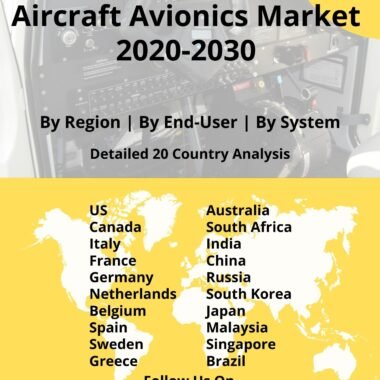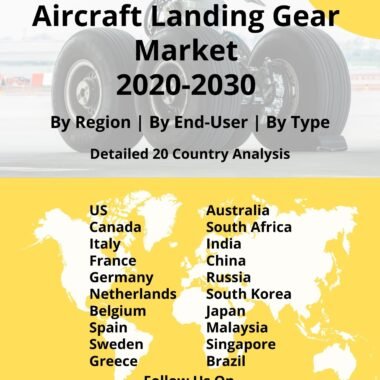Description
Global Defense Turbojet Engines Market
Turbojet engines are the most common type of engine used in fighter jets. They are more powerful than turboshaft engines and can operate at higher speeds. Turbojet engines are also more efficient than turboshaft engines at high altitudes. The working of a military turbojet engine is similar to that of a commercial jet engine, but there are some key differences. Military turbojet engines are typically smaller and lighter than commercial jet engines, and they need to be able to operate in a wider range of conditions, including high altitudes, hot temperatures, and dusty environments. Military turbojet engines are also typically equipped with features such as afterburners and thrust vectoring to improve performance.
Military turbojet engines are typically classified as either axial-flow or centrifugal-flow engines. Axial-flow engines are the most common type of turbojet engine. They have a compressor with multiple stages, and the air flows through the engine in a straight line. Centrifugal-flow engines have a compressor with a single stage, and the air flows through the engine in a circular motion. The choice of engine depends on the size and weight of the aircraft, as well as the performance requirements. Axial-flow engines are typically used in larger aircraft, while centrifugal-flow engines are used in smaller aircraft. The development of new military turbojet engines is a continuous process. As the demands of military operations evolve, so too do the requirements for jet engines. Engine manufacturers are constantly working to develop new technologies that can improve the performance and reliability of turbojet engines for military aircraft.
Afterburners are a feature that is sometimes added to turbojet engines to increase thrust. Afterburners are essentially small rocket engines that are mounted on the exhaust of the turbojet engine. When the afterburners are ignited, they burn additional fuel and air, which creates a large amount of thrust. Afterburners are typically used in fighter jets during takeoff and during high-speed flight. They can also be used in combat situations to increase the aircraft’s speed and maneuverability. Thrust vectoring is another feature that is sometimes added to turbojet engines to improve performance. Thrust vectoring allows the aircraft to control the direction of the thrust, which can be used to improve maneuverability. Thrust vectoring is typically achieved by using a set of vanes that are mounted on the exhaust of the turbojet engine. The vanes can be rotated to direct the thrust in different directions. Thrust vectoring is a very effective way to improve the maneuverability of an aircraft. It is typically used in fighter jets to allow them to perform high-g turns and other evasive maneuvers.
Major factors driving Defense Turbojet Engines Market Growth
The growth of the market is driven by the increasing demand for fighter jets, the need for more powerful and efficient engines, and the rising focus on developing new technologies for military turbojet engines.
Trends influencing the Defense Turbojet Engines Market Size
3D printing is a rapidly developing technology that is having a major impact on the aerospace industry. In the field of military turbojet engines, 3D printing is being used to create a variety of components, including fuel nozzles, turbine blades, and combustion chambers. One of the most significant benefits of 3D printing for military turbojet engines is the ability to create custom components. This is important for military applications, as it allows engineers to design components that are specifically optimized for the needs of a particular aircraft.
Defense Turbojet Engines Market Forecast & Dynamics
The military turbojet engines market is a dynamic and growing market. The market is expected to continue to grow in the coming years due to the increasing demand for fighter jets, the need for more powerful and efficient engines, and the rising focus on developing new technologies for military turbojet engines.
Defense Turbojet Engines Analysis for Recent Developments
The HURJET project, Turkey’s homegrown jet trainer and light attack aircraft, has just passed another important milestone. The first Hürjet prototype’s engine was ignited for the first time after Turkish Aerospace Industries finished the engine integration process. Therefore, HURJET formally started ground tests. The public was informed about the HURJET engine starting test by Prof. Dr. smail Demir, President of the Turkish Defense Industry.
The F404-GE-102 turbofan engine from General Electric, which is already used in single-engine jet trainer and light attack aircraft like the Boeing-Saab T-7 Red Hawk and KAI T-50 Golden Eagle, was chosen by TAI management for the Hürjet prototype. The business signed a deal with General Electric for the F404 engine even though it had originally planned to develop a domestic engine for Hürjet since the domestic engine could not compete. The number of engines TAI has ordered under the contract is unknown. However, given that domestic engine research is anticipated to continue until 2026, it is anticipated that in addition to the HÜRJET prototype aircraft, the first mass-produced aircraft will use the GE F404 Turbojet Engine.
The Market stands at the forefront of technological innovation and strategic advancements in military aviation. As nations around the world invest in bolstering their defense capabilities, turbojet engines play a pivotal role in providing the necessary thrust for a diverse range of military aircraft. The market is witnessing a surge in demand for high-performance turbojet engines that offer superior speed, agility, and operational flexibility, crucial factors in modern air warfare. The integration of advanced materials, digital technologies, and innovative design concepts is reshaping the landscape of turbojet engines. These enhancements contribute to improved fuel efficiency, reduced maintenance requirements, and heightened reliability, addressing the evolving needs of defense forces. Additionally, there is a notable focus on developing engines that align with the principles of stealth technology, enhancing the survivability and effectiveness of military aircraft in contested environments.
Geopolitical tensions and the emergence of new threats have accelerated research and development efforts in the defense sector, leading to the creation of next-generation turbojet engines with enhanced performance characteristics. Collaborations between defense contractors and government agencies are driving the development of cutting-edge propulsion systems, reflecting a concerted effort to maintain air superiority in an ever-changing global security landscape. In 2023, the Global Defense Turbojet Engines Market signifies a commitment to technological excellence and the continuous pursuit of advancements that shape the future of military aviation.




